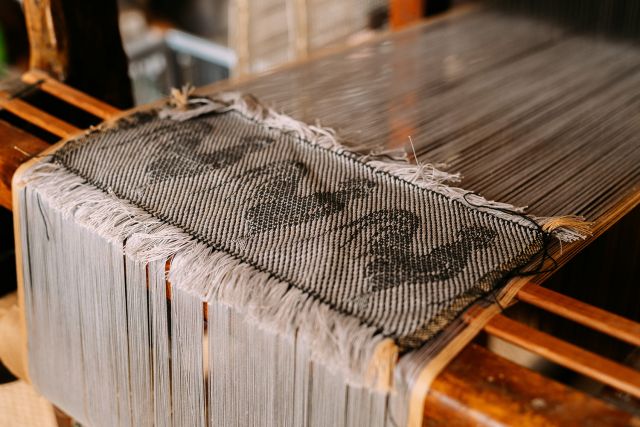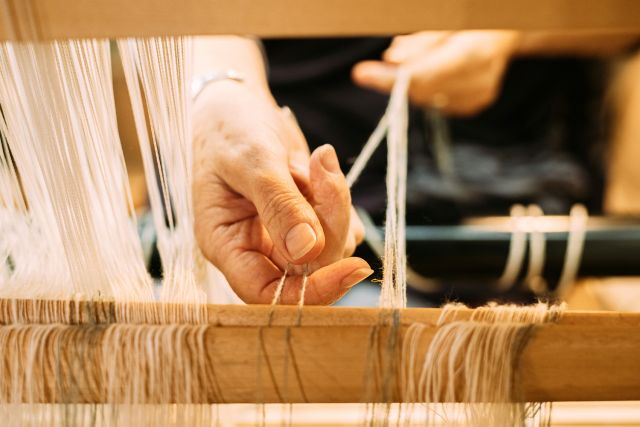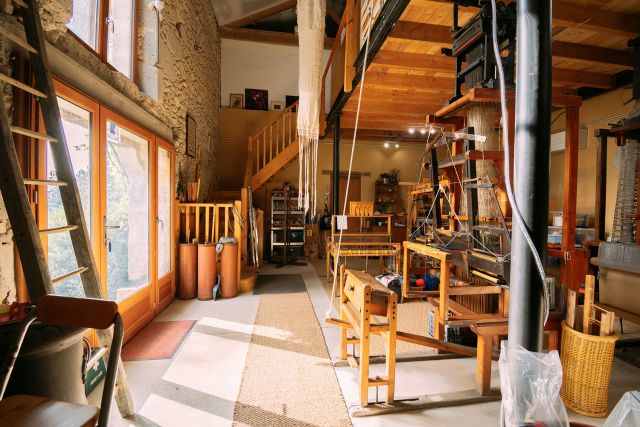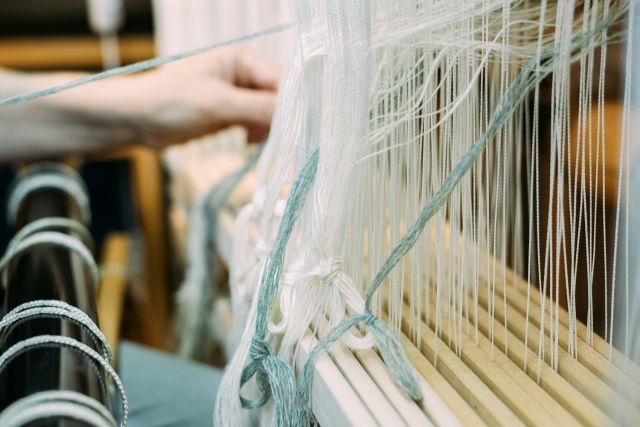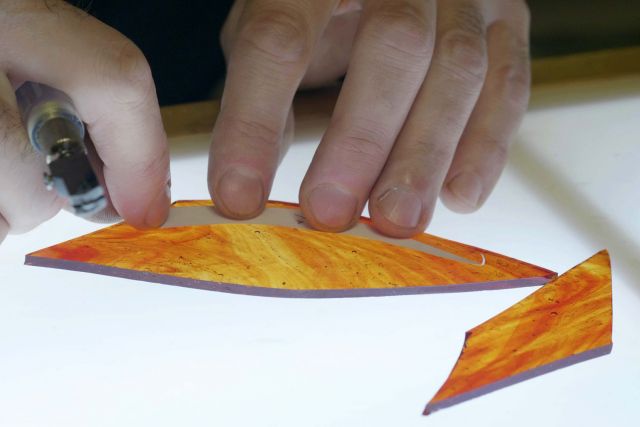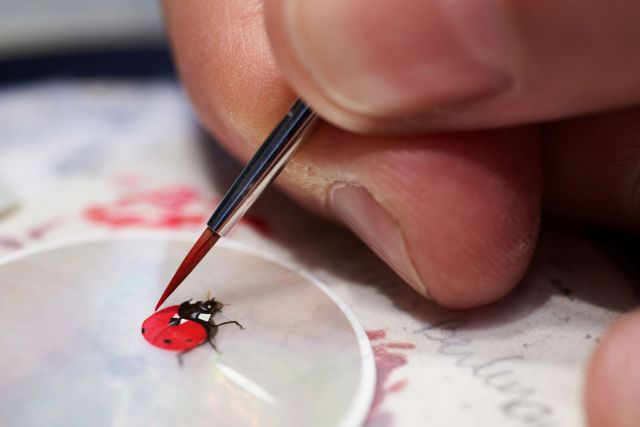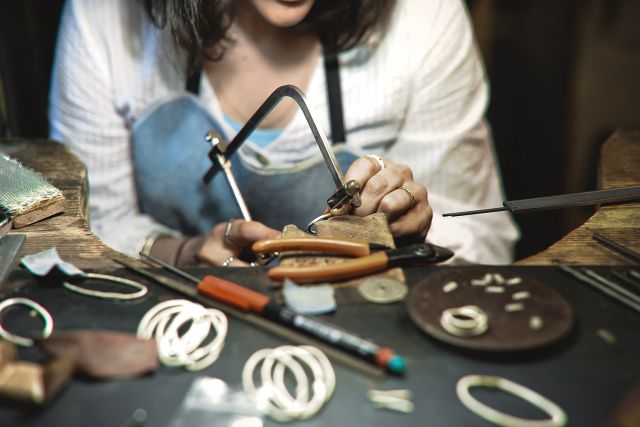This woven picture (not framed), in black and white cotton, was woven as part of a series on a digital hand-jacquard loom, using many different weaving structures. It is inspired by aerial images of the earth, but using a more abstract interpretation of the visual data. Originating in 2006, it was rehung and mounted on black cotton drill and two light wooden poles in 2021.
Height 62 cm
Width 30.5 cm
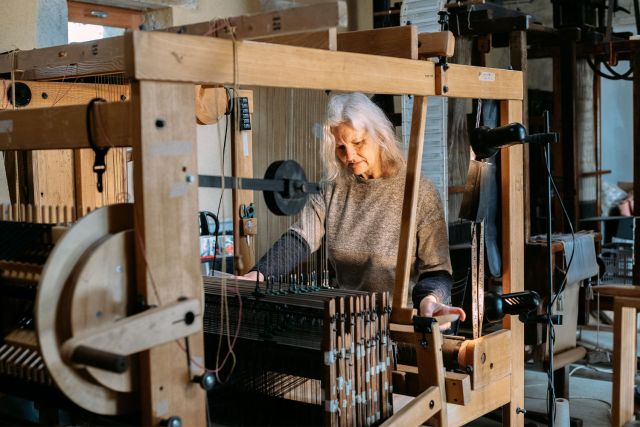
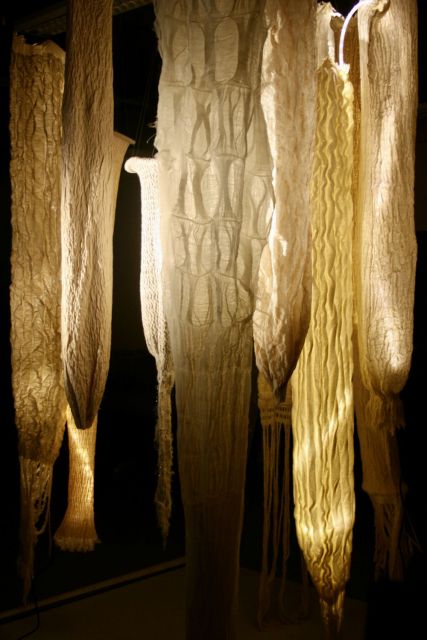
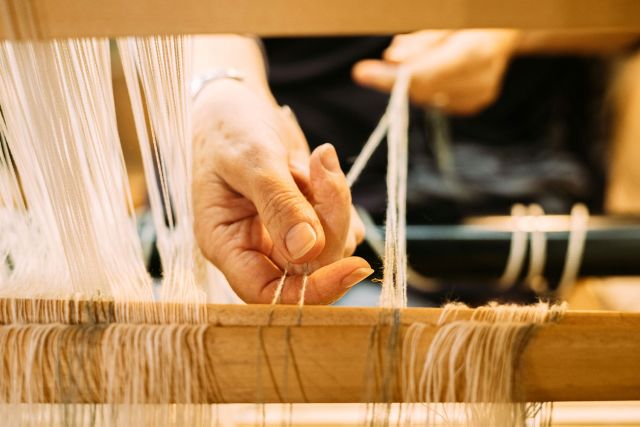
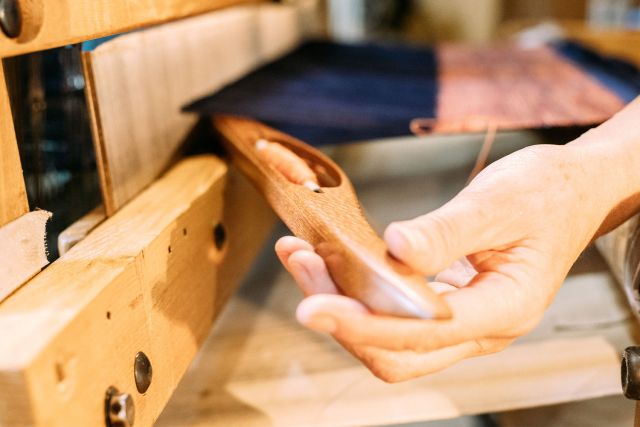
Stacey Harvey-Brown
- The Loom Room France
- Weaver
- Nérac, France
- Master Artisan
By appointment only
+33 631573464
Weaving deeper dimensions
- • Stacey's works include sculptural forms inspired by nature and woven optical illusions
- • She weaves to stimulate the health of the brain and the equilibrium of the body
- • Weaving is her medium for expressing the natural world and its phenomena
“What if?” Stacey Harvey-Brown believes that for each person, especially if they are curious and asks this eternal question, weaving can become something unique that can offer a different interpretation in the world. Stacey is an artist weaver best known for the deeper dimensional textures. She has been weaving for over 25 years and has been teaching weaving since 2005. She loves to unlock creativity through weave and teaches people to express themselves in this incredible medium, which “speaks deeply to people’s identity and personal history”. Stacey is also a passionate writer of weaving books and exhibits her works internationally, such as in 2014 in a touring exhibition in New Zealand, the US, Switzerland and the Netherlands.
Read the full interviewWorks
Photo: © Colin Usher

Photo: © Colin Usher
This woven picture (not framed), in black and white cotton, was woven as part of a series on a digital hand-jacquard loom, using many different weaving structures. It is inspired by aerial images of the earth, but using a more abstract interpretation of the visual data. Originating in 2006, it was rehung and mounted on black cotton drill and two light wooden poles in 2021.
Height 35 cm
Width 32 cm

Photo: © Colin Usher
This wall-hung collage of digital photographs and woven fabric is part of a collaborative series with photographer Bob Russon featuring nature’s erosion of natural surfaces. The surface texture is woven in natural undyed worsted wool fabric, embedded among curved MDF strips, surrounded by geological images and ropes of raw yarn, it illustrates geological processes at work through the force of tectonics.
Length 47 cm
Height 47 cm
Width 5 cm

Photo: © Colin Usher
This wall-hung collage of digital photographs and hand-woven fabric is part of a collaborative series with photographer Bob Russon featuring nature’s erosion of natural surfaces. Surface texture in worsted wool, hand-painted, embedded around MDF shapes, interspersed with cords of silk bouclé and cotton yarns lying adjacent to images of eroding rocks and sand, shows the liminal space where rock and water impact each other in a rhythmic dance.
Length 47 cm
Height 47 cm
Width 5 cm





